Weekly round-up: 05 - 11 Sept 2012
It seems hard to imagine how on earth you can top last week’s crop of high, high quality birds. The legend of the Black Skimmer will be talked about for years to come and although there was nothing touching the chutzpah of such a bird over the past few days, there were three super new arrivals to make sure there was still plenty to think about, talk about and go and see…..
As expected, the tail end of last week’s shorebird arrivals rolled on in to a new week but as the weather settled down and the temperatures rose one last time (the southeast of England climbing to 27 or 28 degrees as the weekend ended) it seemed that perhaps that was that. Not so! Waders continued to appear, along with some high quality passerines too and the week concluded with a pulse of autumnal weather that caused a little bit of a seabird commotion….
After all the Nearctic shorebird arrivals towards the end of last week, there seemed every reason for more this week ~ and the best bird of the past seven days was indeed exactly that ~ another Nearctic shorebird of the highest order, and it became yet another outstanding find for long-term rarity magnet John Kemp.
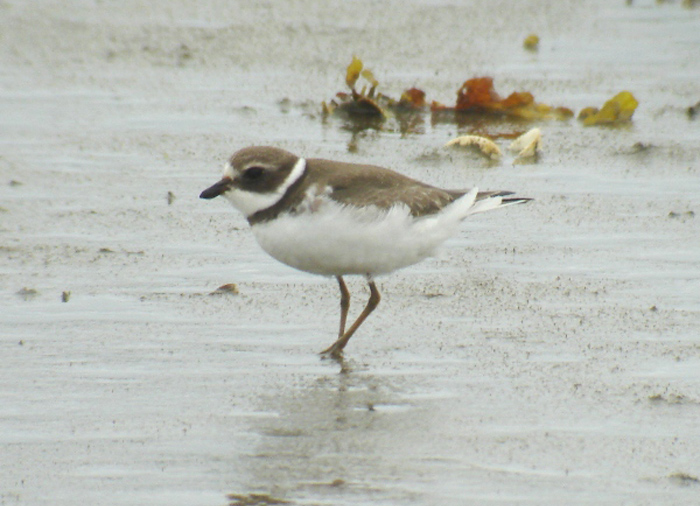
The initials JBK have peppered county bird reports and rarity reports for well over three decades now ~ to the Nu Skool of birders and listers it may be an unfamiliar name, but to the members of the old school, those three initials will be instantly familiar.
This week, that trio of little letters unearthed yet another brilliant find ~ Britain’s third Semipalmated Plover on the beach near South Glendale on South Uist (Outer Hebrides) from 6th.
Here, John takes up the story of this supreme discovery....
While having a walk with my wife near my home at South Glendale, South Uist during the late afternoon of 6th September I heard a distant brief, unfamiliar bird-call about 3-400 yards away in the locality of some small rocky islets interspersed with sand and muddy areas. As I had no scope or wellington boots with me and it was getting late I decided to investigate the following day.
I arrived at the locality around 1.45pm on the 7th having spent part of the morning searching for, and eventually locating an elusive Spotted Sandpiper on the west coast. Within a few minutes I heard a distinctive ‘Chu—weee’ call coming from a nearby ‘Ringed’ Plover only 50 yards away on the sand. I had barely settled down to ‘scope what I realised had to be a Semipalmated Plover when it took off calling and disappeared eastward around a headland, fortunately returning within a minute or so and starting to feed.
A certain amount of panic set in as I realised I would need decent views and some reasonable images to have any hope of substantiating this find. The waders here are generally not too wild as they get used to people cockle picking and today was no exception. As I slowly inched forward the plover walked towards me and fed in an unconcerned manner down to just 10 yards range. After a spell of digiscoping and satisfying myself on a number of important identification criteria I headed up a nearby hill to get a phone signal and spread the news to local birders. Much to my relief an hour later six of us, including Steve Duffield and Andrew Stevenson were grilling the bird at point blank range.
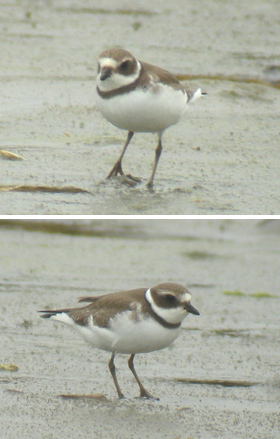
made the journey to the Western Isles (© John Kemp)
The Semipalmated Plover was a juvenile and the identification was based on a number of features:
Firstly the distinctive call, rather like a Spotted Redshank, is a good starting point and quite different from Ringed Plover.
The webbing between all toes was clearly seen, this in itself a clinching feature but it requires very good views.
It was slightly smaller and slimmerthan Ringed Plover.
The supercilium was duller, narrower and shorter than that of most Ringed Plover. This was a useful pointer in narrowing down the search.
The white throat extended very slightly up the sides of the bill to above the gape producing a narrow white wedge. This was easily seen when the bird was close but not possible to see with any conviction at longer ranges.
The breast-band was complete, noticeably narrow and of even widthwhen the bird was in normal feeding mode. It was blacker than on any juvenile Ringed Plover. These features are well depicted in a number of images and were the BEST FEATURE BY FAR for picking out this individual at any range from juvenile Ringed Plover.
The bill was short, stubby and slightly blob-tipped, all black under most viewing conditions, but at very close range showed a very small, slightly paler area at the base of the lower mandible.
The brown feathering of upperparts and crown had very narrow pale fringes, on this individual no bolder than that found on Ringed Plover. The upperparts were marginally darker than most Ringed Plovers though not as dark as the small Arctic race tundrae. A small, very dark juvenile of the latter race was also on the beach.
Legs very dull and difficult to determine the colour in the poor light. Probably a drab greenish yellow, though a brighter diffuse line of yellowish running all the way down the back of legs. I’m sure in sunny conditions they would look brighter.
A narrow eye-ring was not visible in the field, possibly because of the dull conditions, though it shows on some images. The fact that Ringed Plovers can also show eye-rings renders this feature pretty useless for identification purposes anyway.
I have tended to neglect this little bay near my home in favour of the more reliable wader sites on the west coast. I think that will change.
John’s super-showy juvenile, still present on 10th, was the first to reach British shores since the returning bird at Dawlish Warren in April to September of 1997 and the spring of 1998 (from the end of March to mid May).
The Dawlish bird, a first-summer when it appeared, was a puzzle that took some time to unravel, but eventually stayed long enough for local perseverance to win out and secure a top class bit of ID work.
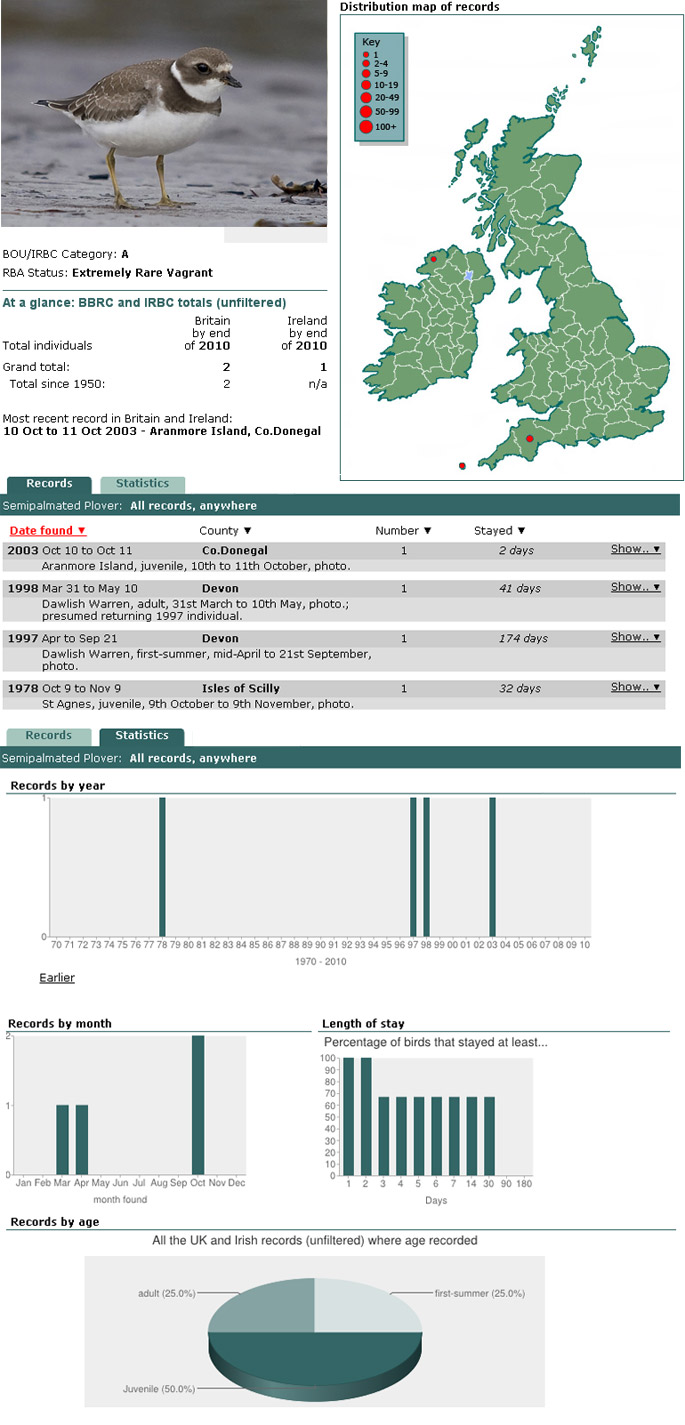
Britain’s first record of Semipalmated Plover, was found and identified by another rare-finding legend, Paul Dukes, on the beach at Periglis on St. Agnes (Scilly) during October 1978, the bird staying for just over a month, being last recorded in the second week of November.
Ireland has one accepted record of this tough-to-nail little wader ~ a two day bird in County Donegal, on Arranmore Island in October 2003, with another waiting in the wings from last autumn ~ the well-documented (and well-twitched) bird around Ventry Harbour, in County Kerry, from 24th September to 15th October.
There have been several other rumours, reports and claims of Semipalmated Plover in the last decade or so, a two-week bird in Cornwall last year for instance, a bird in Argyll in 2007 and also one on the very same island as this one, back in 2001 ~ and last week came a decent sounding potential Semipalmated Plover in Highland ~ but none have come to any sort of acceptable fruition.
The Nu Skool listers who didn’t cross the Irish Sea last autumn should doff their collective listing caps to the sharp-eyes of John Kemp ~ he’s chalked up another outstanding find, one that nestles nicely alongside a couple more in JBK’s top drawer ~ there’s Britain’s first Yellow-browed Bunting, at Holkham, in the legendary “Sibe autumn” of 1975 and also Britain’s second Two-barred Greenish Warbler, in Wells Woods, in October 1996. That’s some going for anyone, and they are just for starters….
In Dorset, one of last week’s, indeed one of 2012’s, most significant finds, the juvenile Short-billed Dowitcher continued to oblige at Lodmoor RSPB throughout the week (albeit a little haphazardly, the bird going missing on site a few times during its stay).
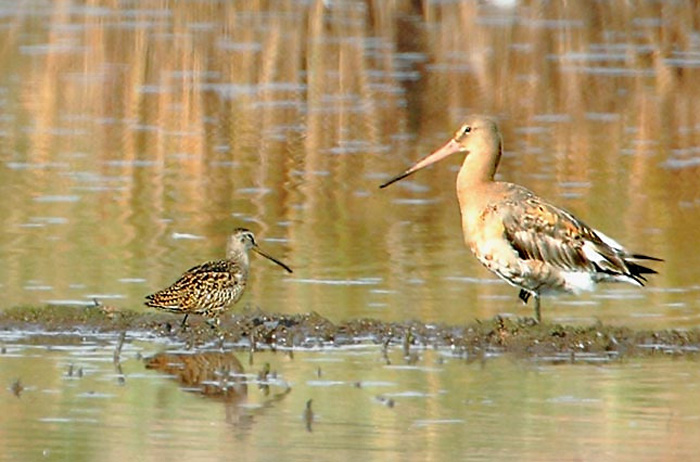
All of the bird’s finer points could be admired, discussed and inwardly digested, and with decent views, there really wasn’t too much of a problem in putting a name to this lovely looking wader. Any lingering doubts at the start of the round-up period were swiftly put to bed as more images came to light and it was a case of “chillax” and enjoy this second for Britain.
Hot on the heels of the Dorset bird, admittedly a significant distance to the north, but certainly of note, came Sweden’s first Short-billed Dowitcher, another delightful youngster found at Utlängan on 6th and then, incredibly, like the proverbial bus, came Britain’s third Short-billed Dowitcher ~ found on Tresco during the morning of 9th…..
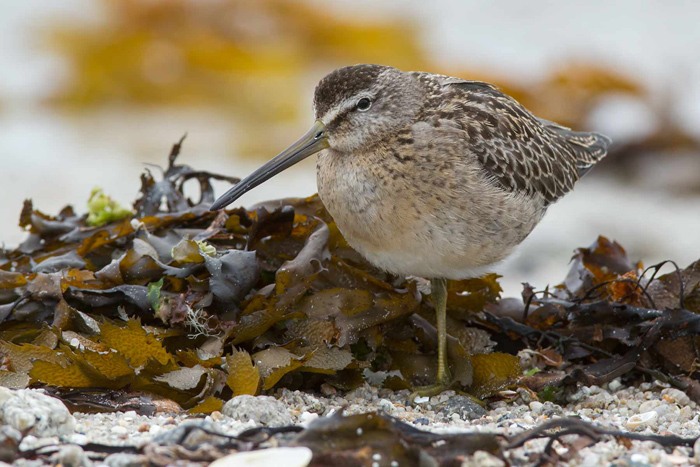
Initially seen from a wildlife cruise, the bird was (like the Dorset indivdiual) first though to perhaps be a Long-billed Dowitcher, but before too long (and after a few photographs were checked) it became another juvenile Short-billed, a first record for Scilly and the second in Britain within seven days. Captured beautifully by local lenses, the bird remained around the southeast end of the island to 11th.
This extraordinary early push of Nearctic waders has already produced three megas in the past week or so, as well as (for early September) a varied array of more familiar species….next up Western Sandpiper maybe. Or something better of course….
Leaping from one RSPB reserve to another and its off to Rainham Marshes where the discovery of a juvenile Baillon’s Crake on 7th caused a bit of a commotion for those with a London list (a first live record for the capital’s recording area) and for those who didn’t score the elusive singing male on Anglesey earlier this year.
This elusive species remains tricky to connect with and the Rainham bird proved to be tough to catch up with, showing only during the early morning of 8th and again briefly the following morning, before performing better in the heat of the day and again, off and on, through the rest of the week.
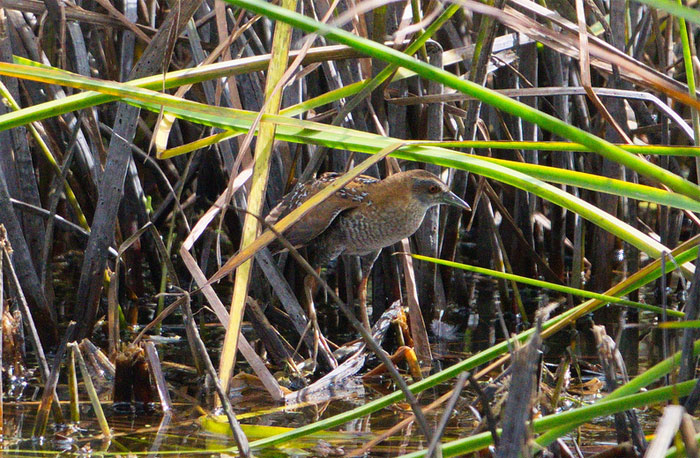
Earlier this summer there was considerable consternation at the revelation that up to nine birds were found at five sites around Britain and Ireland during a nationwide Spotted Crake survey, including seven singing males at just three sites. How far had this particular juvenile Baillon’s Crake travelled? With the warm air and agreeable winds from the southeast, it may well have been a continental drifter, but there remains the tantalising prospect that this may actually be a British raised youngster….how cool is that?
At Landguard Point, the male Spanish Sparrow continued to play games with his potential admirers for several days this week ~ showing in the late afternoon/early evening of 6th, the early morning and late afternoon/early evening of 7th and then again around the same time on the early evening of 8th, 9th and 10th.
In County Cork, the ever-increasing haul of presumed Azorean (Yellow-legged) Gull grew by two over the weekend ~ a near-adult seen at Clonakilty, heading towards Clogheen during the late afternoon of 9th with another, also a near-adult, on the same day, at Owenahincha. In London the possible atlantis (or hybrid) was still around Rainham during the early part of the week.
Generally it was a little quiet out at sea this week, a decent array of species on offer, but it wasn’t until the end of the week that any sort of a shake-up occurred.
Up until the end of the weekend, just two single Great Shearwaters were noted ~ one flew by Bridges of Ross (Co. Clare) on 5th, with another past Porthgwarra on 9th. In the rather breezier conditions on 10th, five Greats and at least 30 Cory’s Shearwaters were seen from the Tuesday afternoon Scilly pelagic, with another Great and nine Cory’s seen from Porthgwarra the same day. On 10th, two more Greats passed Pendeen with another off St. Ives.
Prior to the Scilly birds, just three Cory’s Shearwaters had been seen, passing Whitburn (Co. Durham) on consecutive days (6th and 7th) with the former bird also being seen from Cresswell (Northumberland) 45 minutes after passing the Durham coast. The third bird headed past Filey Brigg (North Yorkshire) on 8th.
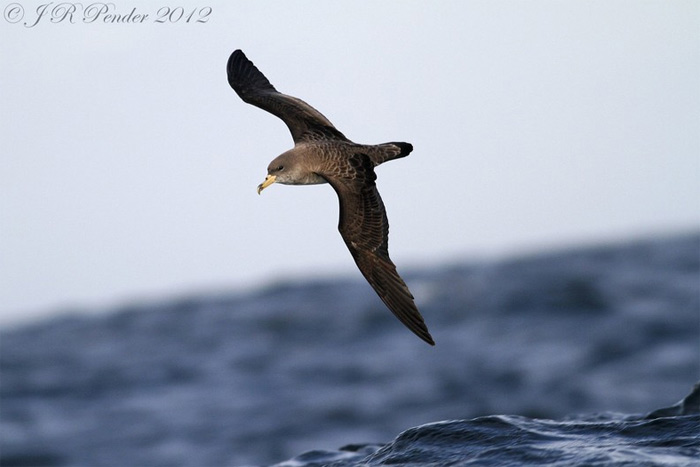
A rather paltry just-over-50 Balearic Shearwaters were recorded up until the morning of 10th, several ones and two reported along the south and west coast, with a few seen off Portland Bill on a daily basis. All that changed on 10th ~ a whopping 282 birds were seen from Start Point in south Devon, while Portland weighed in with 118, 87 was the count from Seaton, with 70 from Berry Head.
Perhaps unsurprisingly there was no repeat of the excellent four figure totals of Sooty Shearwaters seen at the end of the last round-up period ~ this week’s notable tallies were 114 from Bridges of Ross on 7th while on the east coast of England, Spurn recorded 47 birds on 5th and 40 more the following day.
Towards the end of the weekend, Long-tailed Skua numbers had only just cracked double figures ~ one was seen off Shell Ness (Kent) on 5th, with singles the following day off Spurn, Rhos-on-Sea (Conwy) and Annagh Head (Co. Mayo) where four adults were seen on 7th. Single birds were recorded in Fife and Cleveland on 8th and in East and North Yorkshire on 9th. The total was boosted though by a report of eight Long-tails off Barns Ness (Lothian) on 9th, two off the Wirral on 10th with further singles off Mayo, Kerry, Dublin, Fife, Pembrokeshire, Kent and Lincolnshire (two singles there).
Pomarine Skuas managed to nudge in to the high 40’s ~ the relatively low tally boosted by four off Annagh Head on 7th with six and then ten off Hound Point (Lothian) on 8th and 9th. A further 10 were seen on Skye on 11th. Most of the other records (all ones and twos) coming from east coast counties.
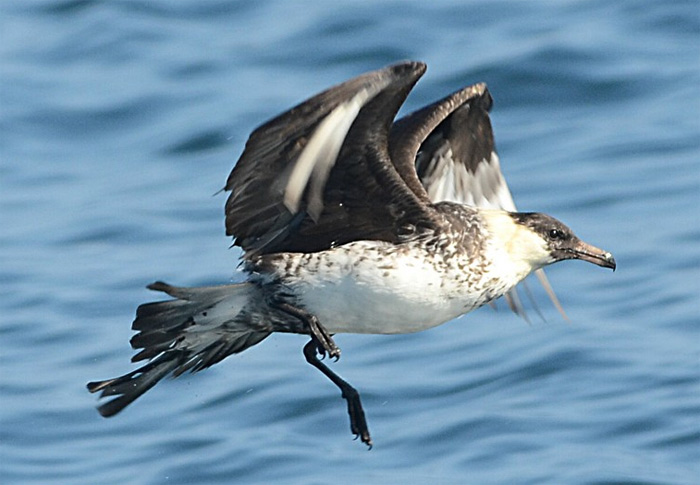
Around 35 Sabine’s Gulls were reported during the week, including four off Strumble Head (Pembrokeshire) on 11th, three from Bridges of Ross (two adults and a juvenile) on 6th, two adults off Inner Farne on 10th, while on 11th, two were seen off Ramore Head (Co. Antrim) and four more passed Clare’s finest seawatching hotspot. In Norfolk, a juvenile Sabine’s Gull was followed along the northwest coast, from Titchwell to Hunstanton during the morning of 8th ~ heading west out in to the Wash as it flew past Sunny Hunny.
At least 40 Grey Phalaropes included half a dozen or so around the Outer Hebrides at the start of the week and then four off Griminish Point (North Uist) on 11th. Two birds were seen from Pendeen (Cornwall) on 5th, two were in Mannin Bay (Co. Galway) on 6th, with four noted off Bridges of Ross on the same day. As the week came to a close, Kilcummin Head rattled in nine during the morning of 11th, with six off Bridges of Ross
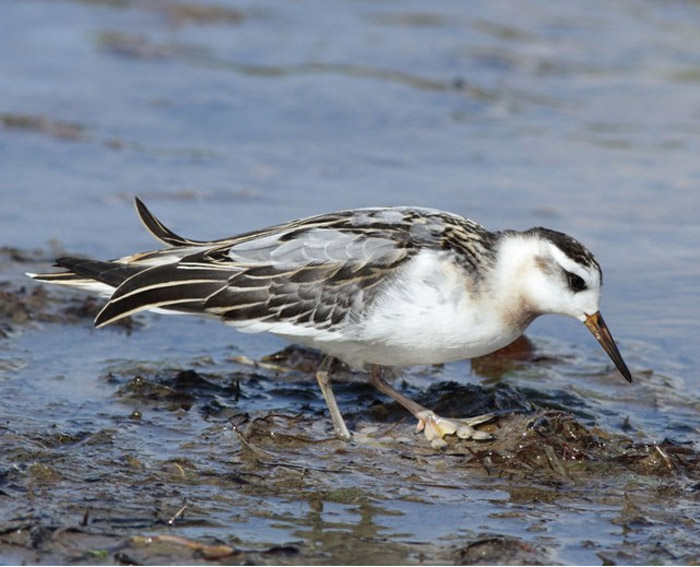
The juvenile Purple Heron and first-summer Glossy Ibis remained around the Ouse Washes RSPB reserve this week ~ the former until 5th, the latter to 11th with a second record for the county coming from Cambridge itself, one heading south down the River Cam, near the learned seat of Queens College on the morning of 8th. In Wales, a Glossy Ibis remained at Marloes Mere for another week and in Wexford, one Ibis became two at Tacumshin on 6th.
A new juvenile Purple Heron was seen in flight at Parkgate Marsh (Cheshire) on 9th with the same day seeing a Cattle Egret arrive in Gloucestershire, at Northwick Warth.
Great White Egrets included two birds in Kent on 5th (at Dungeness and Hersden), and two birds together at the former site from 9th. A roaming bird was in Hampshire and Dorset (seen some seven miles apart, so perhaps two?) and further lone birds were seen in Essex on 7th (at Stow Marsh), Suffolk on 8th (at Bawdsey) and Cambridgeshire (on the red-hot Ouse Washes) on 10th-11th.
Still on the Ouse Washes, a Spoonbill lingered until 8th and multiples included 23 again at Titchwell on 8th, 11 at Stiffkey Fen on 7th (doubtless some overlap from the Holkham post-breeding group) with six in Lincolnshire, at Gibraltar Point and five in Dorset, in Poole Harbour, while four were in north Devon, at Islay Marsh. Singles were noted from Somerset to Suffolk and from Carmarthenshire to Lancashire.
The Broadland Common Cranesfirst significant autumn count came on the evening of 9th, 38 birds seen heading to roost on the marshes near Horsey with an even bigger score, 41, the next night and then 44 birds (in three flocks) on 11th ~ nudging towards (and then through) the county record. Grustastic mate!
Elsewhere there were three birds in stubble fields near New Pitsligo (Aberdeenshire) on 5th, and four birds at Slimbridge and three birds at Welney on 8th.
In Cornwall, at Marazion Marsh, a Spotted Crake remained all week and new birds were found at Seaton Marshes (Devon) and Baron’s Haugh RSPB (Clyde) on 8th, Coombe Hill Meadows (Gloucestershire), Greylake RSPB (Somerset), Porth Hellick Pool, St. Mary’s on 9th and at Upton Warren NR (Worcestershire) and Slimbridge (Gloucestershire) on 11th.
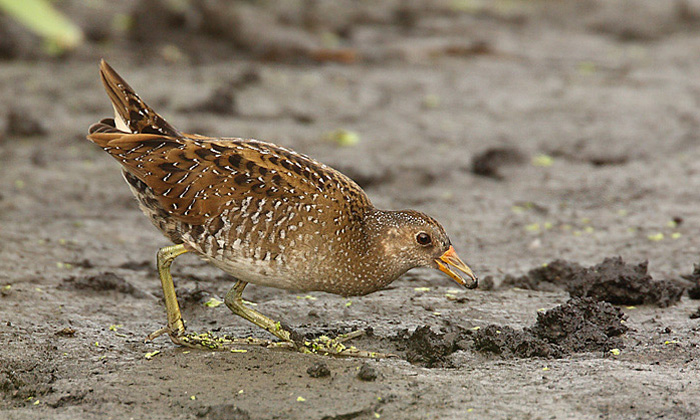
The week’s only migrant Corncrake report came from Fair Isle on 10th.
On Achill Island, in County Mayo, a drake Black Duck was found on Sruhill Lough on 7th ~ and is presumably the drake seen there earlier this year (in April) and through back until 2009, albeit very sporadically. Also on Achill this week, two separate hybrid drake Black Duck X Mallard confirming that our vagrant chum isn’t feeling too out of sorts.
The eclipse drake Blue-winged Teal was still knocking around the waterways at Carbarns Pool this week, still there to 8th at least, while the drake Lesser Scaup and a Ferruginous Duck (a female now) were at Chew Valley Lake (Somerset) to 11th. An eclipse drake Ring-necked Duck was found in South Yorkshire, on Orgreave Lagoons on 10th.
In Scotland, off Blackdog, a drake Surf Scoter was still bob, bob, bobbin’ along amongst the Scoter flock on 8th.
After the fun of wondering where last week’s 13 Snow Geese may have come from, this week there were a few more to play with…on Orkney, two adults and a juvenile were seen at Mull Head, on Mainland, on 7th-8th, while on the Outer Hebrides, at Glason, on Lewis, a Snow Goose was amongst the Greylag Geese from 6th onwards.
Their smaller, cuter white’n’black chums were also on show this week, as two returning Ross’s Geese were seen heading south over Budle Bay and later Cresswell Pond NWT (Northumberland) on 10th ~ in the company of five Barnacle and 30 Pink-footed Geese.
A lovely first-summer male Red-footed Falcon was a neat warm weather find at Chichester GPs in West Sussex on 6th. Autumn Red-foots are always far rarer than spring time overshoots and a look at the accepted records for the last 10 autumns reveal only around a dozen “autumn” records (largely late August and early to mid-September) from a total of over 80 birds.
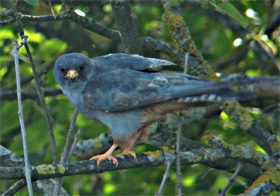
And, of course, one of those autumn “Red-foots” turned in to Britain’s one and only Amur Falcon ~ found on September 14th 2008 at Tophill Low in East Yorkshire, the bird lingered for a whole month with ne’er a question raised as to what it would actually would prove to be….many saw it as a Red-foot (a nice padder post the Flamborough Brown Shrike for instance) but it was only after its departure that the infamous underwing shots (taken late in its stay, post-moult) sealed the deal and as a few voices said “oh yeah, I thought it looked odd” many more, who didn’t bother to see it, wailed long in to the October night....
As the round-up period drew to a close, nine single Honey Buzzards had been recorded (three for Kent and one each for Lothian, Lancashire, Nottinghamshire, Essex, East Sussex and Cornwall) while just three Montagu’s Harriers were reported ~ the first-summer lingering at Tacumshin and juveniles at Cissbury Ring in West Sussex on 6th and over Minsmere RSPB (Suffolk) on 10th.
In County Donegal, the male Snowy Owl was still out on Arranmore Island until 10th at least and the second Snowy of the week was seen out on St. Kilda, also on 10th (a male was seen on the island for a week or so in July too).
The far northwest of Scotland was the dominant force where Semipalmated Sandpipers were concerned this week ~ four or five birds recorded during the week, including up to three new arrivals.
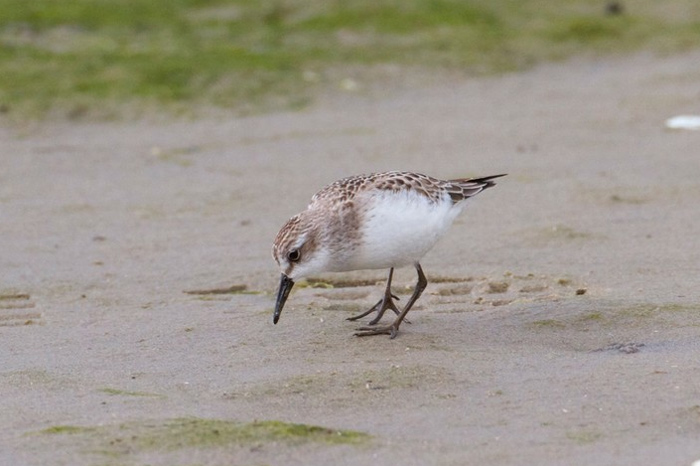
Last week’s intriguing juvenile at Baile Gharbhaidh on South Uist was in place to 6th while the bird at Gott Bay, on Tiree remained to 7th. New birds appeared at Harrapool on the Isle of Skye on 7th and was still present on 11th, with a bird at The Wig (Dumfries & Galloway) on 8th having its identity confirmed from photographs. The fifth bird of the week was another one for South Uist, reported on the beach at Carnan on 9th (although only two miles from the rufousy bird of earlier in the week, the events at Butt of Lewis last week ~ two markedly different birds in the space of 24 hours ~ show that these rare peeps are appearing in number already).
Another Butt of Lewis bird from last week was the juvenile American Golden Plover and that individual was still present on 5th, a day which saw four new adults arrive ~ on St. Mary’s (Scilly), Cockersand Abbey (Lancashire), the Cefni Estuary (Anglesey) and on North Ronaldsay (Orkney).
These were followed by a very brief in & out adult at Cley on 6th, an adult at Bornish, South Uist on 7th ~ with it or another at Loch Grogarry on 8th and back near Bornish, at Ormiclate, on 9th ~ when the adult was joined by a juvenile. A second adult then arrived on North Ronaldsay on 9th and further new birds, both adults, pitched up on the rocks at Bridges of Ross and the grassy, racing sward of the Curragh in County Kildare on 10th.
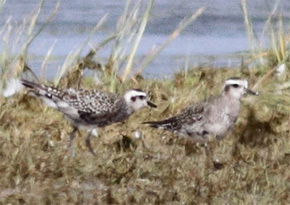
…and as if a Semipalmated Plover, up to four Semipalmated Sandpipers, two American Golden Plovers, five or six Buff-breasted Sandpipers and four or five Pectoral Sandpipers wasn’t enough for Hebridean birders to get stuck in to, there was also a juvenile Spotted Sandpiper to enjoy as well ~ another bird racked up for South Uist’s haul ~ one present at Rubha Ardvule on 6th-7th, while last week’s juvenile Spotted Sandpiper was seen again at Smerwick Harbour on 11th.
Staying in Ireland, two new moulting adult American Golden Plovers were found at Tacumshin on 8th along with seven Pectoral Sandpipers (also on 8th) and a new White-rumped Sandpiper the following day.
Last week’s super first-winter Wilson’s Phalarope remained at Kinsale Marsh (Co. Cork) until 9th while the newly arrived first-winter Lesser Yellowlegs that made landfall at Kingsmill Lake in Cornwall last week remained in place all week. A Yellowlegs sp., thought to be perhaps a Lesser, was seen in flight over North Ronaldsay on 10th, flying high to the north before a firm conclusion could be reached.
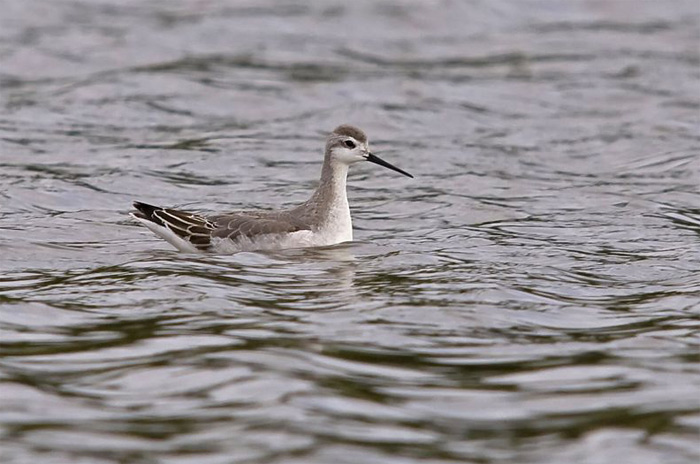
New Baird’s Sandpipers were found at Birsay on Mainland Orkney on 8th (only the third record for the islands following single birds on North Ronaldsay in 1993 and 2011) and Titchwell RSPB (Norfolk) from 10th (the fourth record for the site, following on from birds in May 1983, August 1993 and September 2004), while last week’s bird in Cleveland was still in the area of Seaton Snook to 10th.
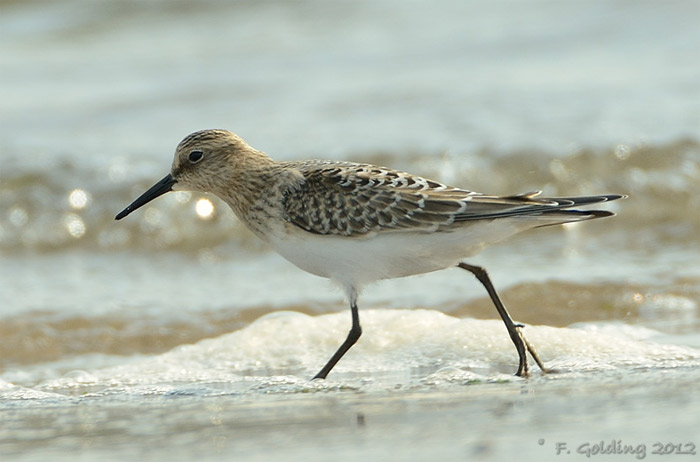
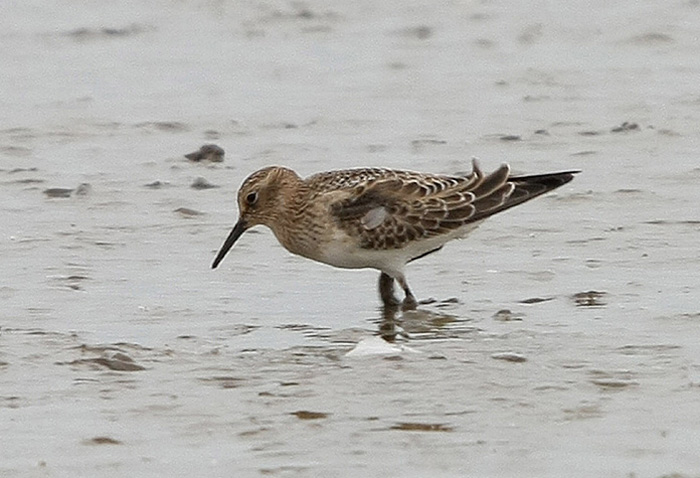
Along with the already mentioned White-rumped Sandpiper in Wexford, further new arrivals this week were found at the Rogerstown Estuary (Co. Dublin) and inland at the Ouse Washes (Cambridgeshire) on 8th-11th. Interestingly, the first White-rumped Sandpiper for the county was also at the Ouse Washes, and on a near-identical date (6th-9th September 2000) with the only other record coming from Grafham Water in October 2005.
Cambridgeshire boasts a mightily impressive list of rare waders for an inland county ~ along with the three White-rumped Sandpipers, there’s also a single Baird’s Sandpiper (in August 2007 at Paxton Pits), a juvenile Least Sandpiper (at Grafham in the autumn of 1983), a Semipalmated Sanpiper (photographed at Ouse Fen in May 2007), two Killdeers (at Paxton Pits in March 1957 and Bainton GPs in March 1976), four Collared Pratincoles (the most recent in 2009), two Black-winged Pratincoles (in consecutive years, 1981 and 1982), two Sociable Plovers (the most recent coming in 1991), two Broad-billed Sandpipers (May birds in 1986 and 2006), an ancient (1854) Upland Sandpiper, a single Spotted Sandpiper (a wintering juvenile at Fen Drayton in 1993-’94), a one-day spring Greater Yellowlegs (at Welches Dam in May 1992), eight Lesser Yellowlegs between 1934 and 2007, five Marsh Sandpipers (the most recent arriving in 1995, seven Wilson’s Phalaropes (including an adult female in 2007), two Pacific Golden Plovers (in 1996 and 2004), upwards of a dozen American Golden Plovers since the first in 2001 and, most famous of all, the remarkable adult Red-necked Stint, at Somersham, for two days in September 2001.
The 20 or so Buff-breasted Sandpipers seen this week were split with one for Wales (in Gwent), three in England (one still at Marazion, two still on Scilly), nine on Scottish islands (one on Foula, one on Fair Isle, one on Lewis, one on Tiree, three together on North Uist and two on South Uist) and six or seven in Ireland (with three in Kerry, including two at Carrahane Strand on 7th) and one each for Derry, Mayo, and Clare.
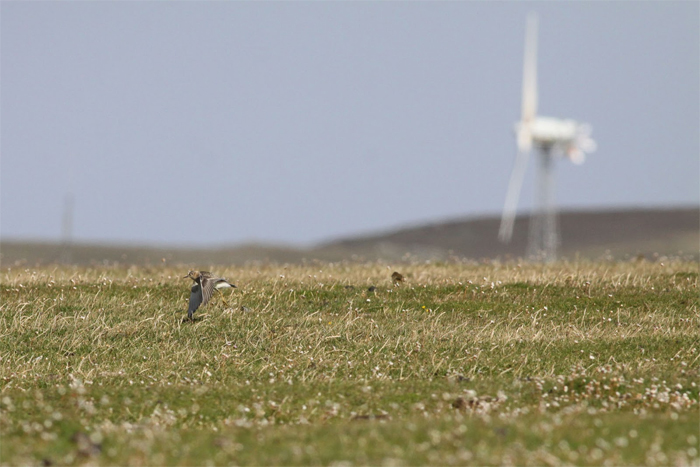
Over 70 Pectoral Sandpipers were totted up this week ~ as well as the previously mentioned septet at Tacumshin, at least 24 counties/regions in Britain and four Irish counties registered Pectoral Sandpipers this week, including up to four or five birds on South Uist during the week and “threes” at Loch a’Phuill, on Tiree on 8th and Slains Pools (Aberdeenshire) and Loch of Tankerness, Mainland Orkney on 9th.
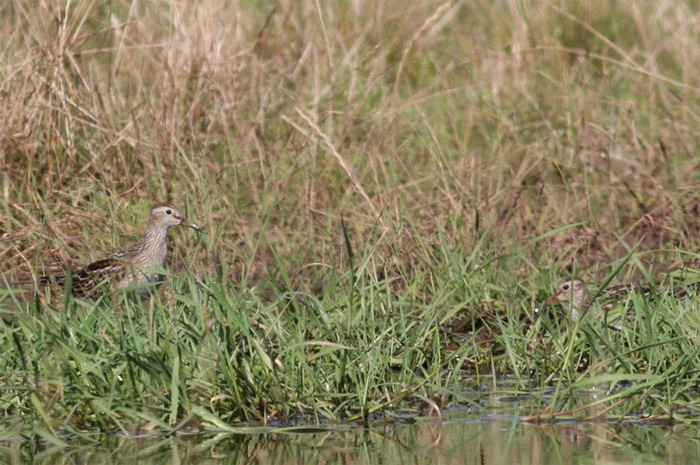
In Gloucestershire, the adult winter Long-billed Dowitcher remained an ever-present at Slimbridge (any Short-billed twitchers do a Double Dowitcher Day?) and a (the?) Greater Yellowlegs was reported at the Montrose Basin (Angus) on 10th, but there was no sign later in the day.
Single Dotterels were on Scilly on 5th and 9th (on St. Martin’s and St. Mary’s) with others at Dale Airfield (Pembrokeshire) also on 9th and Holme (Norfolk) on 10th with two together on Cleeve Hill (Gloucestershire) on 11th.
A juvenile White-winged Black Tern was found at Sandymount (Co. Dublin) late in the day of 8th while the adult Forster’s Tern was still present around Soldier’s Point (Co. Louth) to 8th.
The popular adult Bonaparte’s Gull was still around Whitburn (Co. Durham) on 9th and the only Ring-billed Gulls of the week were the regular, resident bird at Groomsport (Co. Down), the returning adult in Forth and an adult again in County Antrim, at Portrush. The same two second-winter Glaucous Gulls from last week remained in to this week ~ at Troon and Killala, with a near-adult off Girdleness (Aberdeenshire) on 9th and singles on South Uist and Shetland on 11th.
One of the undoubted highlights on the passerine front this week was the late evening Paddyfield Warbler, trapped and ringed at the top end of the Ythan Estuary in Aberdeenshire, on 8th. This will become the first record for the county (and northeast Scotland) ~ a fact made perhaps all the more remarkable given that Shetland has 34 accepted birds (to the end of 2010).
Talking of Shetland, up on Fair Isle, a River Warbler was found in the Observatory garden on the morning of 11th ~ just two months after one spent a good deal of June and a bit of July in the same spot! This remains a really rare species here, up until the end of 2010 there were just 39 accepted records of River Warbler, 19 of them coming from Shetland with 13 of those arriving on Fair Isle, including the first ever record for Britain, seen on 24th-25th September 1961.
On the edge of Greater London, an Aquatic Warbler seen briefly at Rainham Marshes on 10th ~ the first for recording area since another Rainham bird, seen in September 2008.
Back to Fair Isle, where the Arctic Warbler was still present to 5th while on Skomer, off the coast of Pembrokeshire, the week’s sole Greenish Warbler was located on 8th. Another Welsh island, Bardsey hosted two Melodious Warblers on 8th while Barred Warbler numbers fell away sharply this week ~ ten birds seen this week, with two on Fair Isle and two in Norfolk, including an elusive four day bird at Holme. A passage Marsh Warbler was identified at Bockhill Farm (Kent) on 9th.

Two first-winter Citrine Wagtails were on Scilly over the last seven days ~ the bird seen on Lower Moors was still in place on 8th and a new bird was seen at Porth Hellick Pool from 7th (although it may have been present since 4th). Another first-winter bird was found on South Ronaldsay (Orkney) on 8th.
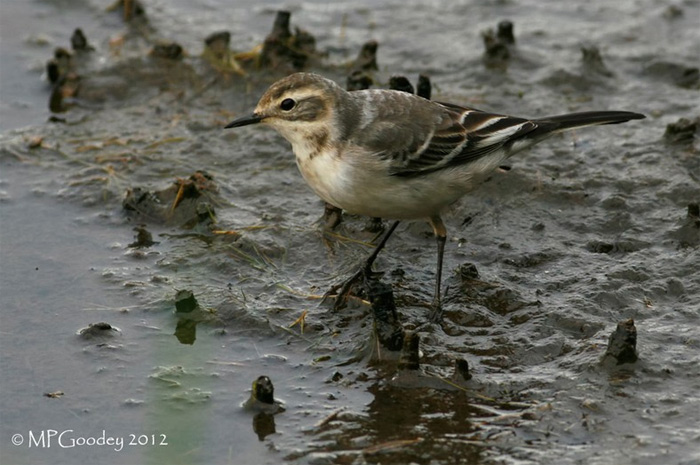
Between 5th-10th birders found four Ortolan Buntings ~ the first appearing at Hengistbury Head (Dorset), followed by birds at St. Justinian (Pembrokeshire) on 8th, in the south dunes at Winterton (Norfolk) on the hot and sunny afternoon of 9th, out on Inishbofin (Co. Galway) on 10th. Then on 11th, the week’s total was doubled as four Ortolans were found together on Tresco ~ a significant event these days….
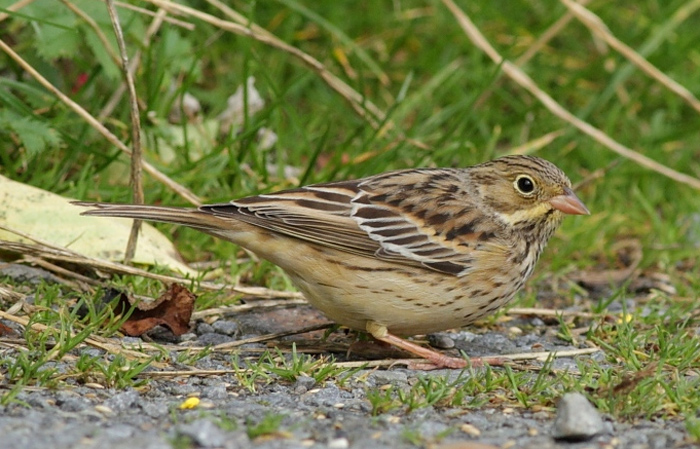
Four Common Rosefinches were counted around Fair Isle on 7th with singles found on Tiree at Hynish from 5th – 7th with it or another at Balephuil on 8th (with two there on 9th) and another was trapped and ringed at Copeland Bird Observatory (Co. Down), also on 8th. Back on Shetland, another Rosefinch was found on Foula on 9th and the last of the week was a couple of birds on Unst on 11th.
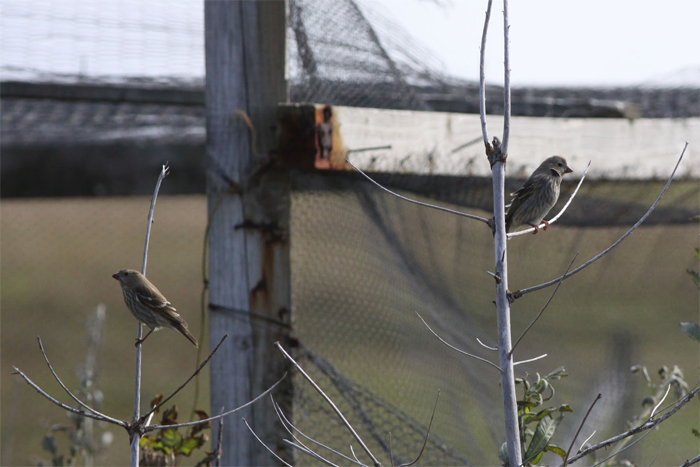
Eight Red-backed Shrikes were noted this week ~ one was still being seen at Wembury (Devon) as the new review period began and was followed by in East Sussex, Scilly (two birds on St. Mary’s), Kent, Norfolk (two birds there too) and Pembrokeshire, while around 20 Wrynecks included four in Dorset, three on Scilly on 8th-9th (on Bryher, St. Mary’s and St. Agnes) and three in Cornwall.
Some September colour came by way of a Hoopoe at Yelland (Devon) on 8th and a Golden Oriole on Mainland Shetland, at Ollaberry, on 10th.
Finally, in Kent, a Tawny Pipit flew over Pegwell Bay, heading towards Sandwich, on 9th and a Richard’s Pipit was reported heading over Leyton (London) on 7th.
Busy, busy, busy again then ~ the weather for the next few days seems to be set towards a west coast week ~ more wader arrivals look to be on the cards, there may be another hit of seabirds and we could, if conditions are really kind, see our first American passerine of the autumn, anywhere from Scilly to Shetland….
American birds are certainly on the move in force….imagine the sight that greeted observers at Cape May late last week when over 1200 Common Nighthawks moved through in an hour at dusk on 7th…for some 500 Club listers here, just one would do…
Mark Golley
12 September 2012









